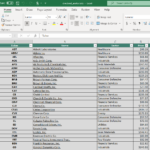The investment management industry stands at a pivotal juncture, where artificial intelligence (AI) is reshaping many traditional processes and decision-making frameworks. From portfolio management to company analysis, AI’s capabilities offer unprecedented opportunities to enhance efficiency, scale expertise, and uncover novel insights. It also introduces risks, including overreliance, regulatory challenges, and ethical considerations.
This post summarizes lessons learned from the front lines, incorporating insights from a team of investment specialists, academics, and regulators who are collaborating on a bi-monthly newsletter for finance professionals, “Augmented Intelligence in Investment Management.”
Here, we explore AI’s transformative impact on the investment industry, focusing on its applications, limitations, and implications for professional investors. By examining recent research and industry trends, we aim to equip you with practical applications for navigating this evolving landscape.
Lesson #1: Augmentation, Not Automation
AI’s primary value in investment management lies in augmenting human capabilities rather than replacing them. According to a 2025 ESMA report, only 0.01% of 44 000 UCITS funds in the European Union explicitly incorporate AI or machine learning (ML) in their formal investment strategies [^1]. Despite this marginal adoption, AI tools, particularly large language models (LLMs), are increasingly used behind the scenes to support research, productivity, and decision-making. For instance, generative AI assists in synthesizing vast datasets, enabling faster analysis of market trends, regulatory documents, or ESG metrics.
A 2025 study by Brynjolfsson, Li, and Raymond demonstrates AI’s ability to scale human expertise, particularly for less-experienced professionals. In a field experiment with customer-service agents, AI assistance reduced average handle times and improved customer satisfaction, with the most significant gains observed among novice workers [^2]. This suggests that AI can democratize expertise in investment settings, enabling less experienced investment professionals to perform complex tasks like financial modeling with greater accuracy.
Practical Insight: For less-experienced investment professionals, investment firms may deploy AI tools to enhance their productivity, such as automating data collection or generating initial research drafts. More experienced professionals, however, could focus more on leveraging AI for hypothesis testing and scenario analysis.
Lesson #2: Enhancing Strategic Decision-Making
The impact of AI extends beyond operational efficiency. It also influences strategic decision-making. A 2024 article by Csaszar, Katkar, and Kim highlights AI’s potential to conduct a Porter’s Five Forces analysis [^3]. AI can also serve as a “devil’s advocate,” identifying risks and counterarguments to mitigate groupthink — a critical advantage for investment teams. In addition, AI-driven sentiment analysis tools, powered by natural language processing (NLP), can parse earnings calls, social media, or news to gauge market sentiment, offering investors a potential edge.
However, AI’s “black-box” nature poses challenges. A 2024 study in Frontiers in Artificial Intelligence notes that AI’s opacity raises regulatory and trust concerns [^4]. Explainable AI (XAI) frameworks, which provide transparency into model outputs, are emerging as a potential solution to align with existing regulations.
Practical Insight: For professional investors, the question is no longer whether to adopt AI, but how to integrate it into the investment decision design in a practical, transparent, risk-aware, and performance-enhancing manner. The second lesson highlights the limitations of the current generation of GPTs. With their pretended explainability, they all cannot explain how results were achieved. As a result, in high-stakes fiels like finance — where full transparency and control are essential — AI should be used to support decision design, not to make the final decision. Its role is best suited to generating ideas or automating components of the process, rather than serving as the final arbiter.
Lesson #3: Preserving Human Judgment
While AI can increase productivity, an overreliance may create tangible risks. One area that may have been overlooked is the risk that AI may erode critical thinking skills. A 2024 Wharton study on generative AI’s impact on learning found that students using AI tutors performed better initially but struggled when AI support was removed, indicating a potential loss of analytical skills [^6]. For investors, this suggests that excessive dependence on AI for tasks like valuation or due diligence could undermine the contrarian thinking and probabilistic reasoning essential for the generation of excess returns.
Anthropic’s 2025 analysis further illustrates these cognitive outsourcing trends, where professionals delegate high-order thinking to AI. To counter this, investors must embed AI within structured workflows that encourage independent analysis. For instance, AI can generate initial investment theses, but in the end, investment professionals have the responsibility. They must deeply understand the thesis and firmly believe in it.
Practical Insight: Create deliberate workflows where AI outputs are stress-tested through human-led discussions. Encourage analysts to perform periodic “AI-free” exercises, such as manual valuation or market forecasting, to maintain cognitive sharpness.
Lesson #4: Ethical and Regulatory Challenges
AI’s integration into investment processes may raise ethical and regulatory challenges. A 2024 Yale School of Management article highlights liability concerns when AI-driven decisions lead to unintended outcomes, such as discriminatory algorithms in recruiting or housing [^8].
In investment management, similar risks arise if biased models misprice assets or violate fiduciary duties. Moreover, a 2024 Stanford study reveals that LLMs exhibit social desirability biases, with more recent models showing a greater extent of biases.
Practical Insight: With AI having a role in decision making, human guidance and oversight has become even more important. The assumption that machines can make better investment decisions by being more rational is unfounded. Current AI models still exhibit biases.
Lesson #5: Investor Skill Sets Must Evolve
As AI reshapes the investment industry, investor skill sets must evolve. A 2024 article in Development and Learning in Organizations argues that investors should prioritize critical thinking, creativity, and AI literacy over rote learning [^14].
Practical Insight: The shift from technical to non-technical skills—accompanied by a rising need for meta-skills like learning how to learn—is not a new phenomenon. It reflects a longer trajectory of technological advancement that began accelerating in the latter half of the 20th century and has steepened further with the emergence of AI-augmented human intelligence. The challenge now lies in targeting more precisely how these competencies are developed in a personalized manner, including support from machines through tailored tutoring and related tools.
A Balanced Approach to AI Integration
AI is transforming investment management by enhancing efficiency, scaling expertise, and enabling sophisticated analyses. However, its limitations — opacity, biases, and the risk of overreliance — warrant attention. By integrating AI alongside human oversight, adopting a critical thinking mode, and adapting to regulations, investors can benefit from its huge potential.
The path forward lies in practical experimentation — using AI to support analysis, embed intelligence into workflows, and enhance decision-making. Equally important is investing in the human skills that complement AI’s strengths. Firms that proactively address the ethical, regulatory, and security dimensions of AI will be best positioned to lead in an increasingly AI-driven industry. Ultimately, the investment industry’s ability to balance technological augmentation with human judgment will determine its success in delivering lasting value to clients.
Footnotes
[^1]: ESMA, “AI-Driven Investment Funds in EU Peaked in 2023,” 2025.
[^2]: Brynjolfsson, Li, and Raymond, Quarterly Journal of Economics, 2025.
[^3]: Csaszar, Katkar, and Kim, “How Is AI Reshaping Strategic Decision-Making,” 2024.
[^4]: Frontiers in Artificial Intelligence, “Enhancing Portfolio Management Using Artificial Intelligence,” 2024.
[^5]: Aldasoro et al., “Predicting Financial Market Stress With Machine Learning,” BIS, 2025.
[^6]: Wharton, “Generative AI Can Harm Learning,” 2024.
[^7]: Anthropic, “Brains on Autopilot?,” 2025.
[^8]: Yale School of Management, “Who Is Responsible When AI Breaks the Law?,” 2024.
[^9]: Stanford University, “LLMs With Big Five Biases,” 2024.
[^10]: Anthropic, “AI Safety & Jailbreak Reduction,” 2022.
[^11]: PLOS Mental Health, “When ELIZA Meets Therapists,” 2025.
[^12]: University of Geneva, The Routledge Handbook of Artificial Intelligence and Philanthropy, 2024.
[^13]: Fagbohun et al., “GREEN IQ – A Deep Search Platform for Comprehensive Carbon Market Analysis,” 2025.
[^14]: Development and Learning in Organizations, “Nurturing Human Intelligence in the Age of AI,” 2024.


























